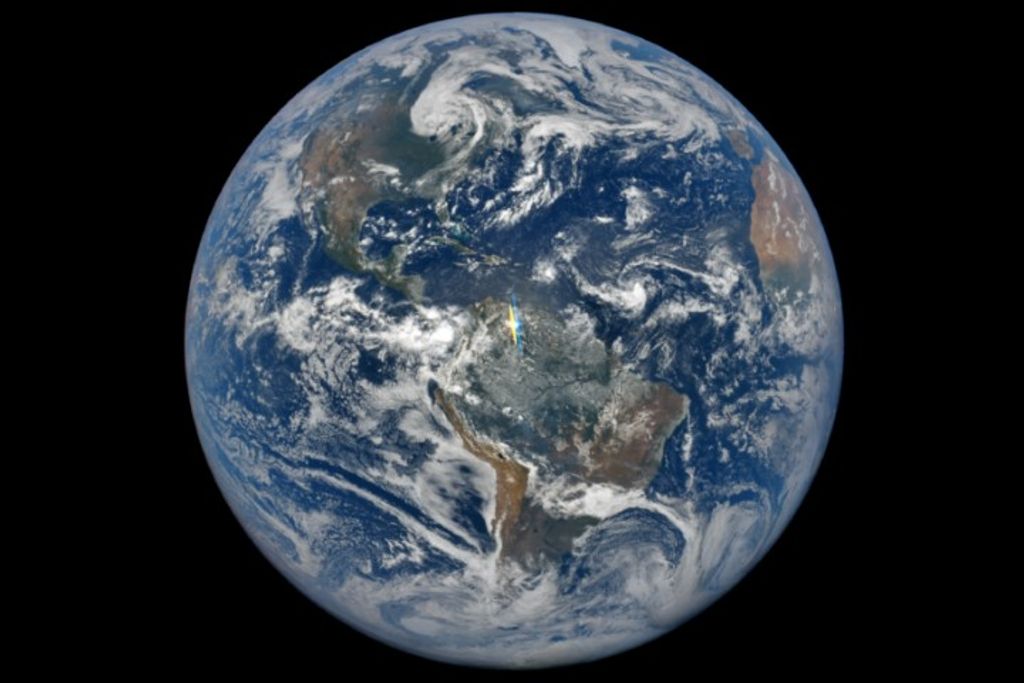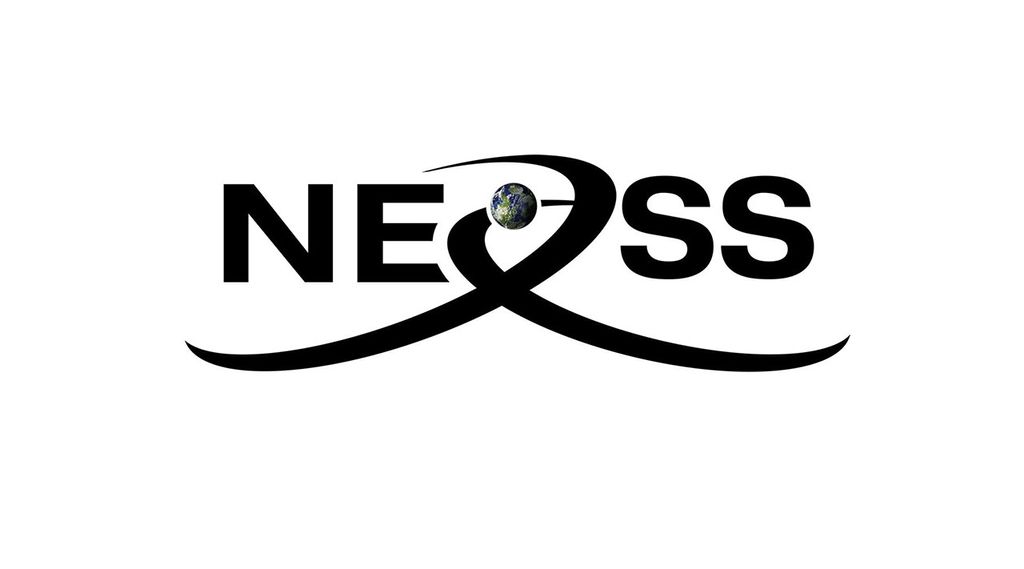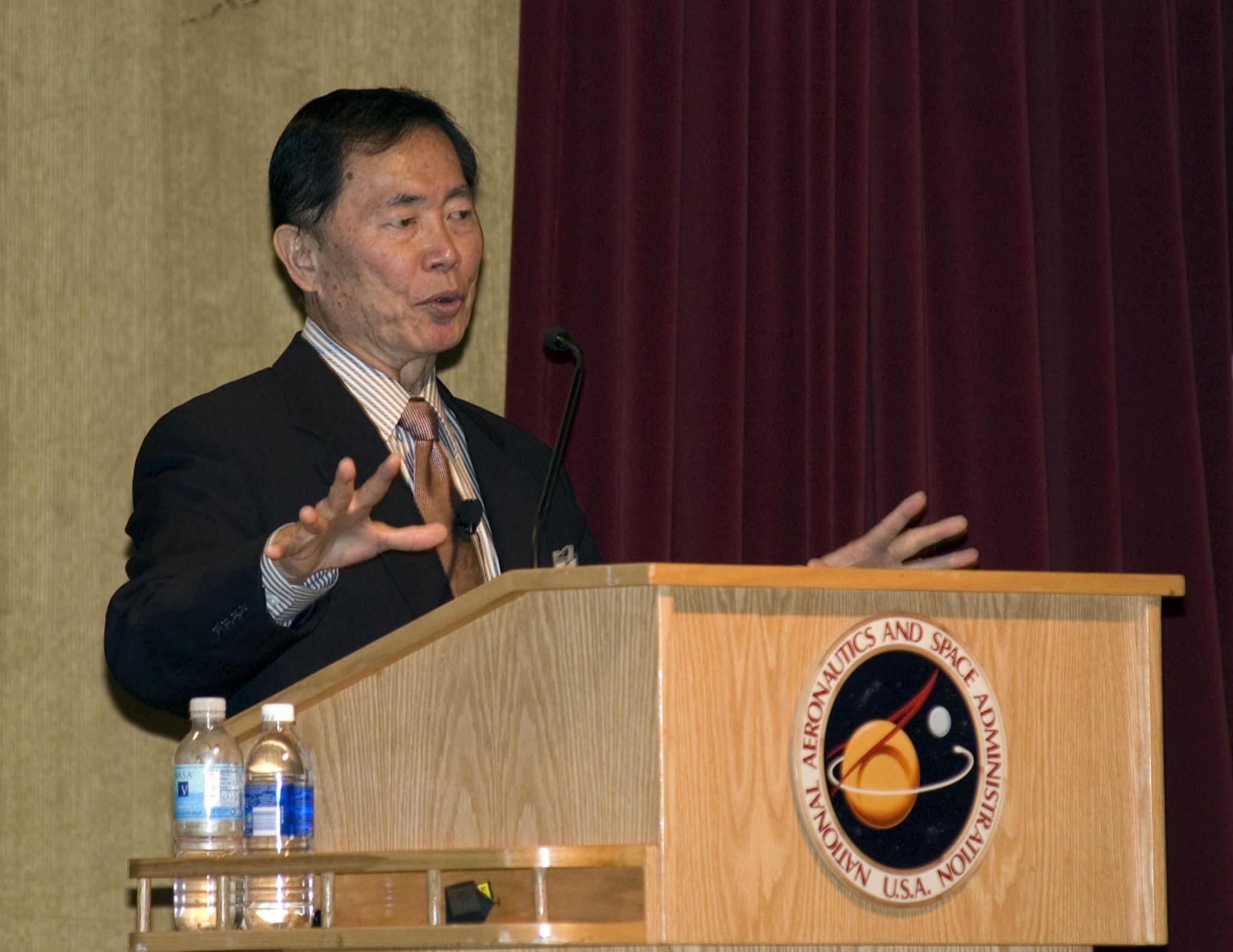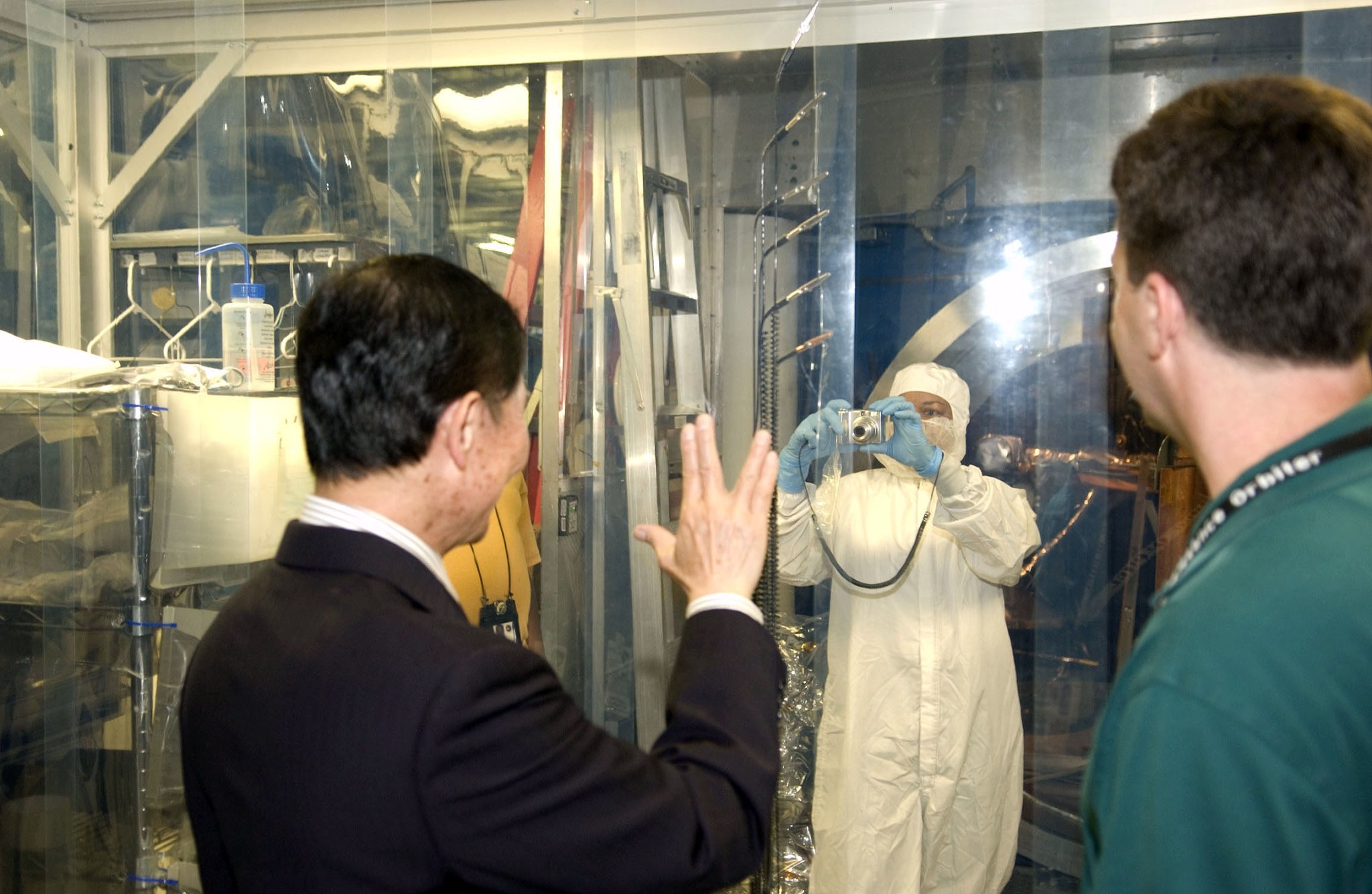As helmsman of the Starship Enterprise, Lt. Hikaru Sulu explored strange, new worlds, sought out new life and new civilizations, boldly going where no one had gone before. But on June 3, Mr. Sulu’s course did not take him to Vulcan or to a rendezvous with the Klingons.
Instead, George Takei – famous for portraying Star Trek’s Sulu on the small screen and the silver screen – visited NASA’s Goddard Space Flight Center to deliver a presentation entitled “Leadership, Diversity and Harmony: Gateway to Success.”
Takei’s lecture linked the diversity displayed in the original Star Trek series, which aired from 1966 to 1969, to the diversity he encountered at Goddard.
Gene Roddenberry, the creator of Star Trek, frequently reminded us that the Starship Enterprise was a metaphor for starship Earth, and the strength of this starship lay in its diversity,” Takei said. “I see [at NASA] the same diversity that we had on Star Trek.”
Takei reminded a full auditorium that the racial climate and Cold War tensions of the 1960s made the Enterprise crew a “political fiction.” Aside from the Japanese-American helmsman, the bridge crew included Lt. Uhura, of African heritage, and Mr. Chekov, of Russian descent.
But now, the International Space Station is just one example of how far society has come since then, Takei said. The cooperation shown on the ISS “was a utopian dream four short decades ago.”
Takei attributes this progress to people he calls “change agents”: “Change agents can envision a world better than the one we have today and act” to make it better, he said, adding that he sees a lot of change agents at Goddard, both social and technological. “You folks are the real pioneers of our time.”
Takei also spoke of his own experiences with discrimination during his speech.
The Japanese-American Takei was born in Los Angeles in 1937. After the bombing of Pearl Harbor that brought the United States into World War II, President Roosevelt signed an executive order that forced Japanese-Americans into internment camps dotted across the country. Takei and his family spent the rest of the war in these detention facilities.
As a gay man, Takei has also been deeply involved in activist organizations, such as Frontrunners and the Human Rights Campaign. Goddard’s Gay Lesbian Bisexual Transgender and Asian Pacific American advisory committees partnered to invite Takei. The timing of his visit coincided with the end of Asian Pacific American Heritage Month (May) and the start of Gay and Lesbian Pride Month (June).
A Science-Fact Tour for a Science-Fiction Star
Prior to the lecture, Takei and his partner of 20 years, Brad Altman, toured Goddard’s environmental and engineering test facilities, to get a sneak preview of the centers’s upcoming missions.
The tour started at the second-floor gallery, outside the High-Bay Clean Room, current residence of components that will be installed on the Hubble Space Telescope as part of Servicing Mission 4.
Mike Adams, Hubble’s carriers development manager, and Dr. Kevin Boyce, the system lead for repair of the Advanced Camera for Surveys, briefed Takei and Altman on what role Goddard’s clean room plays. The High-Bay Clean Room houses exact replicas of Hubble sections, which makes it the perfect place to test new telescope components prior to launch.
Next stop was the Acoustic Test Chamber to see the Solar Dynamics Observatory. SDO will essentially observe the weather of the sun to study its effects on Earth. The Acoustic Test Chamber can blast a payload with 150 decibels of sound, which is about the level you would hear standing next to a jet engine during takeoff. A rocket can create a lot of noise when it goes up; making sure a satellite can withstand the racket is an important step in preparing for launch.
Glenn Bock, a test conductor for SDO, pointed out some of the satellite’s key components on a nearby actual-size model. To make sure SDO always points in the correct direction, he said, it will make use of devices called Star Trackers.
“Not Trekkers?” Takei jokingly asked. Bock chuckled and said he would see what he could do about changing the name.
“I was floored by his energy and interest in what we do,” Bock said later. “Lots of us grew up with Star Trek; it’s in our minds when we’re doing all this.”
Just a few paces away from the Acoustic Test Chamber is another clean room, the temporary home of the Lunar Reconnaissance Orbiter. The Lunar Reconnaissance Orbiter is the first mission in NASA’s planned return to the moon. Among its objectives is to find possible landing sites for future manned missions.
Takei and Altman spoke with Craig Tooley and Catherine Peddie, LRO’s project and deputy project managers, while technicians fully garbed in clean room “bunny suits” took short breaks from their work to take pictures and issue Takei the Star Trek trademark “live long and prosper” salute.
“It was inspiring to show George and Brad our test facilities,” said Ed Packard, of the Environmental Test Engineering and Integration Branch. “He had a sincere interest in how we do things. He made us all feel like we were on the bridge of the Enterprise.” Packard explained to Takei and Altman how Goddard’s Thermal Vacuum Chamber works to simulate space conditions.
Not only does the chamber use a combination of pumps to eliminate all but the tiniest trace of air, it also can be cooled to minus 310 F and heated to 302 F, simulating temperature swings that spacecraft and their components might experience on their journeys to the final frontier.
“It’s such a thrill to be here with you folks at NASA, because you’re the real pioneers of our time,” Takei said of the Goddard experience. “So many people here told us that [they] watched “Star Trek” as a student in college or in high school, and that’s what inspired [them] to go into this. But you guys are the inspiration for us. You truly are our heroes of the 21st century.”
Takei was not the first Star Trek guest to receive a warm welcome at Goddard. Connor Trinneer, who played Chief Engineer “Trip” Tucker on “Star Trek: Enterprise,” toured the environmental and engineering test facilities on July 7, 2006.
By Robert Garner
NASA’s Goddard Space Flight Center, Greenbelt, Md.





























